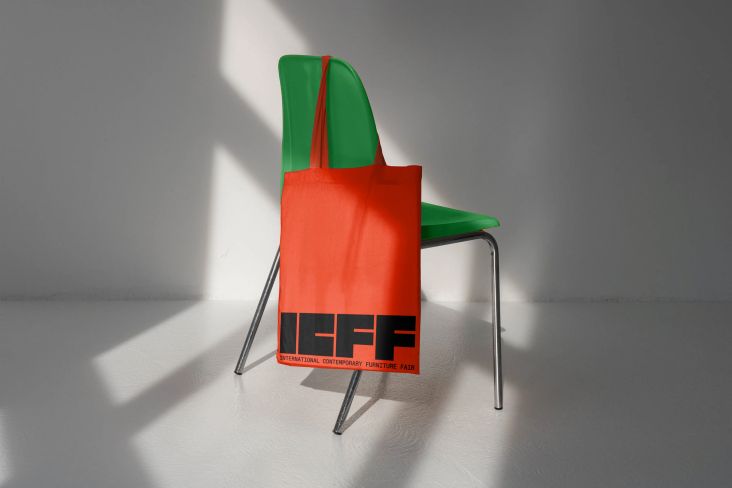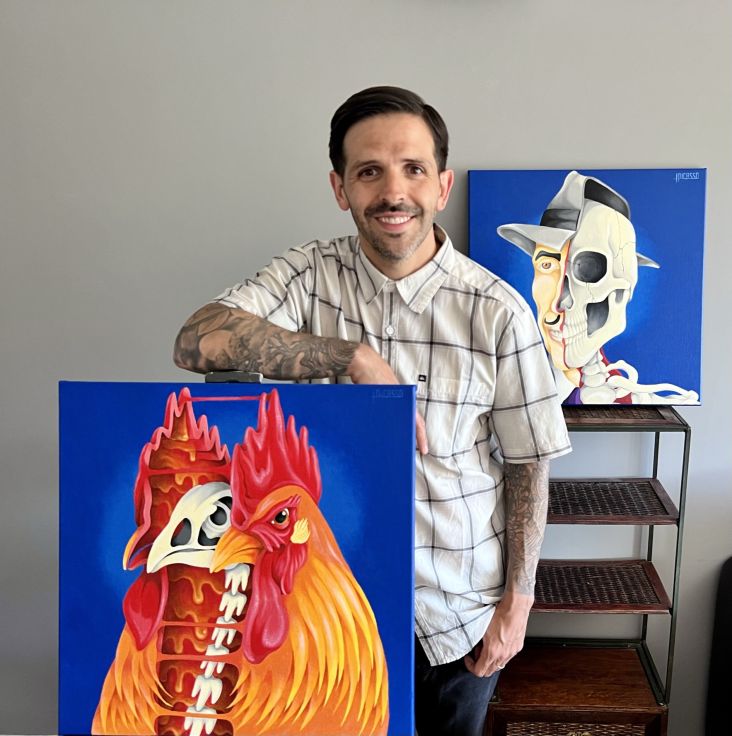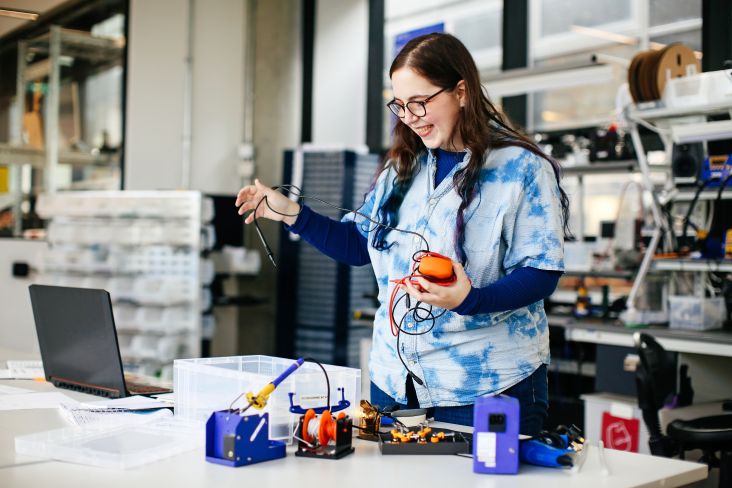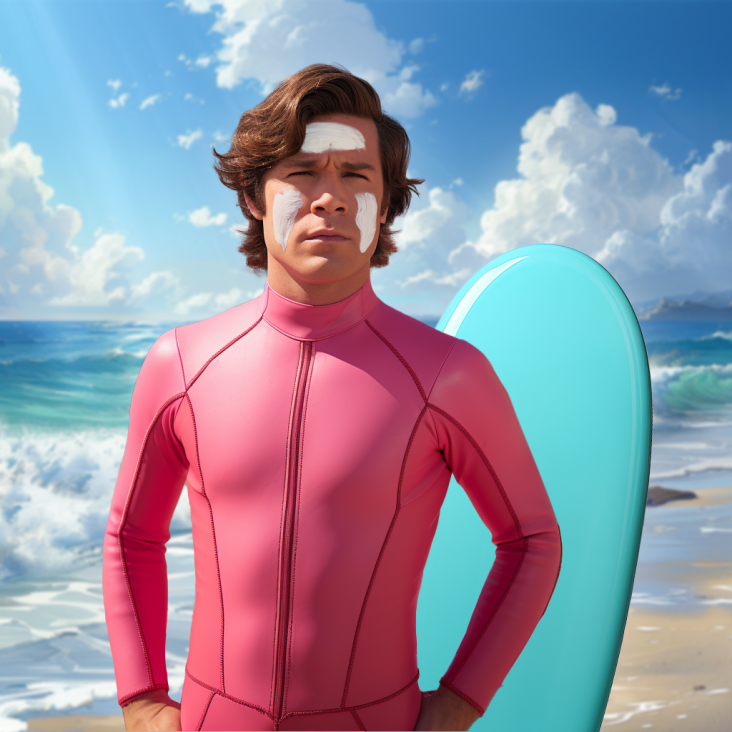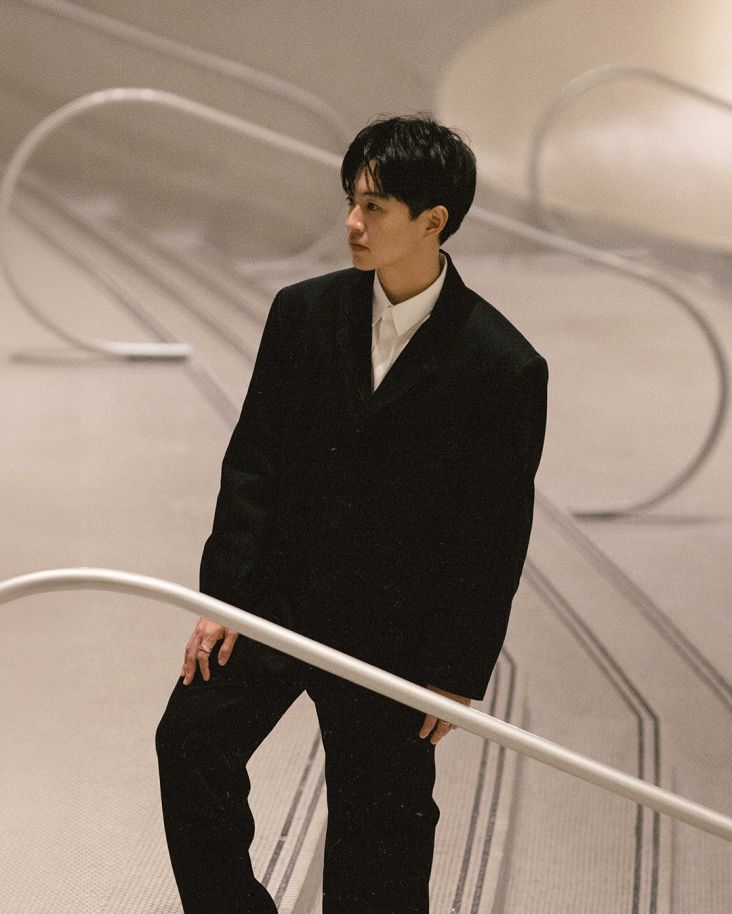Posture coach Eleanor Burt and the transformative power of restoring 'natural human movement'
We speak with Posture Ellie to discover more about Postural Alignment Therapy, something more people are talking about, in a bid to understand how we might find pain relief and joyful movement by changing our posture for the better.
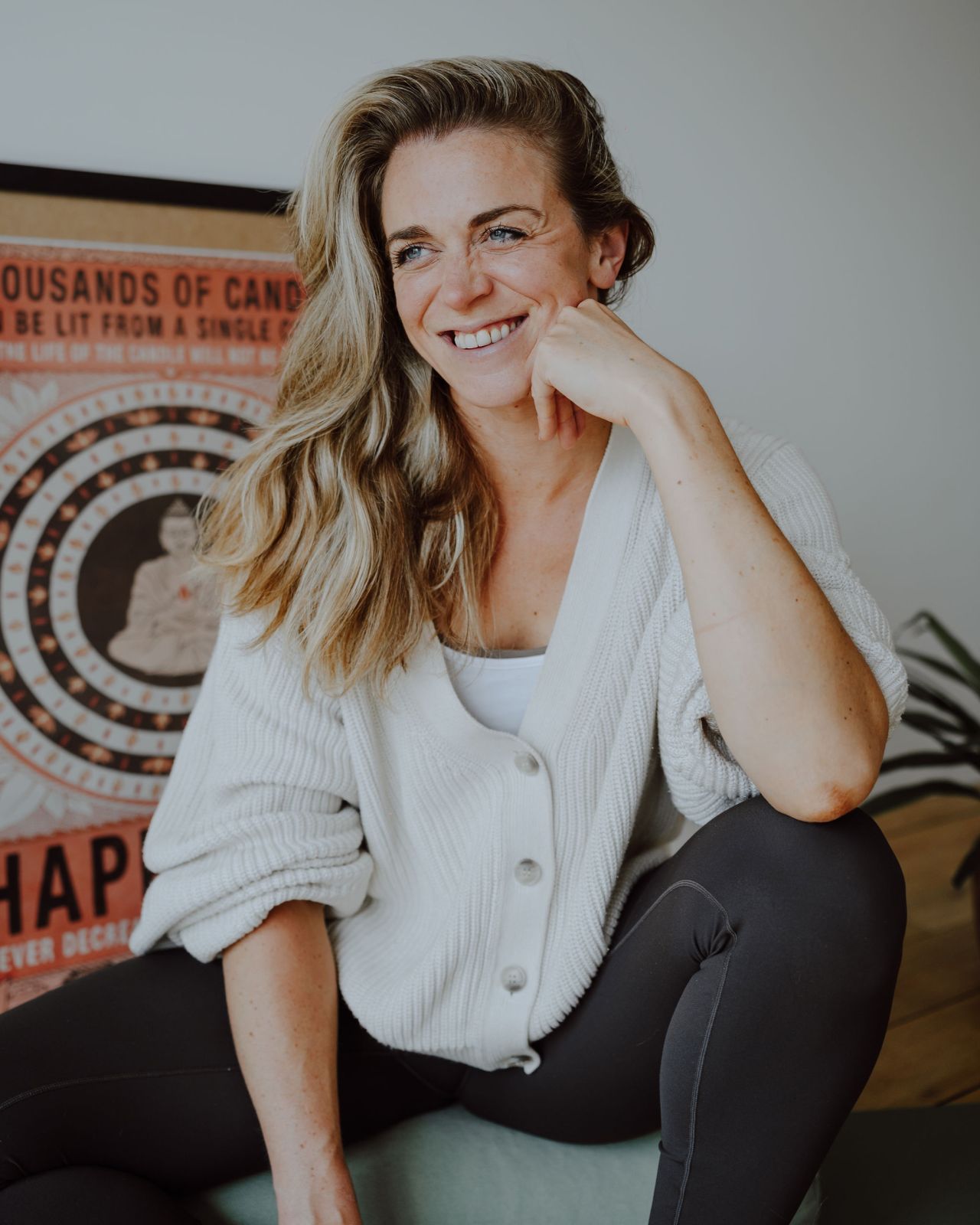
Let's face it. Most of us are guilty of hunching over our desks, straining our necks to look at our screens, sitting poorly in unsupportive office chairs and then slumping on a soft and squishy sofa at the end of each day. It's no wonder millions of us suffer from neck and back pain every year.
If you're currently dealing with niggling aches from spending too long at your desk, what does it take to be pain-free? A physio? Some acupuncture? An osteopath? Whilst all these things can help, they often only alleviate symptoms without dealing with the cause of your pain, making it likely to return in future. So what's the answer?
There has been more of a move lately to understand that if we want to live a healthy, "pain-free" life, then we must do what we can to get to the root of our problems. We, ourselves, have to make positive changes to our lifestyle. One way to do that is through Postural Alignment Therapy. It's nothing new, but it's starting to become a bigger topic of late – especially here in the UK. It's all based on The Egoscue Method, which was created by Pete Egoscue through his efforts to find solutions for his own chronic pain. It's been around since 1971, would you believe, and is explained beautifully in his popular book, Pain Free: A Revolutionary Method for Stopping Chronic Pain. (Apologies for the Amazon link; we couldn't find it elsewhere.)
Now, people all over the world are training to become coaches of The Egoscue Method. One such specialist is Eleanor Burt, also known as Posture Ellie. Ellie is passionate about guiding people "back home to the body they deserve" – one that's free from pain and full of joyful movement, with them feeling themselves again around family and friends and enjoying life to the fullest.
If you're reading this and nodding along – perhaps running out of treatment options to sort yourself out – then the following conversation with Ellie might offer some enlightenment. Disclaimer: I don't usually believe in this kind of stuff. I assume it can't be that easy. However, I am personally recovering from a herniated disc, so I have been desperately searching for solutions online and fell upon this particular approach. And I can confirm that just one session of posture therapy made an incredible difference. Like, mindblowing. (If you're interested, it was this specific video that massively helped.)
It was magical just how much I was able to improve the alignment of my back, shoulders, pelvis...everything – all in less than half an hour. Imagine what's possible if I adopt this regularly! Got your attention? Read on to learn why I think this amazing therapy should be something everyone does.
What exactly is it that you do? What is a posture specialist coach?
I have the joy of teaching people how to move pain-free in thirty minutes a day. Moving pain-free is a language we are very familiar with as children but a language that many of us lose our fluency in as we get older.
This isn't because we are 'getting old' but because the older we get, the less we tend to move. The problems begin as soon as we are put in a baby seat to stop us from moving around too much or when we are ordered to sit still in a chair all day at school. In today's world, even young children are starting to very quickly lose their connection to their physical, animalistic bodies.
The less we move, the stiffer we become. The stiffer we become, the less efficient our previously well-oiled machine can run – an inefficient machine suffers wear and tear in parts of the machine where it's not supposed to. This eventually shows up as pain. The more pain you're in, the less you move; the less you move, the stiffer you become – and the cycle continues.
Luckily, there is actually an incredibly simple way to break out of the cycle. It takes time, it takes accountability, and it takes kindness towards yourself, but by restoring gentle movement back to all of the joints and muscles in your body, I help people rediscover the feeling of having a body you're not fighting against the whole time.
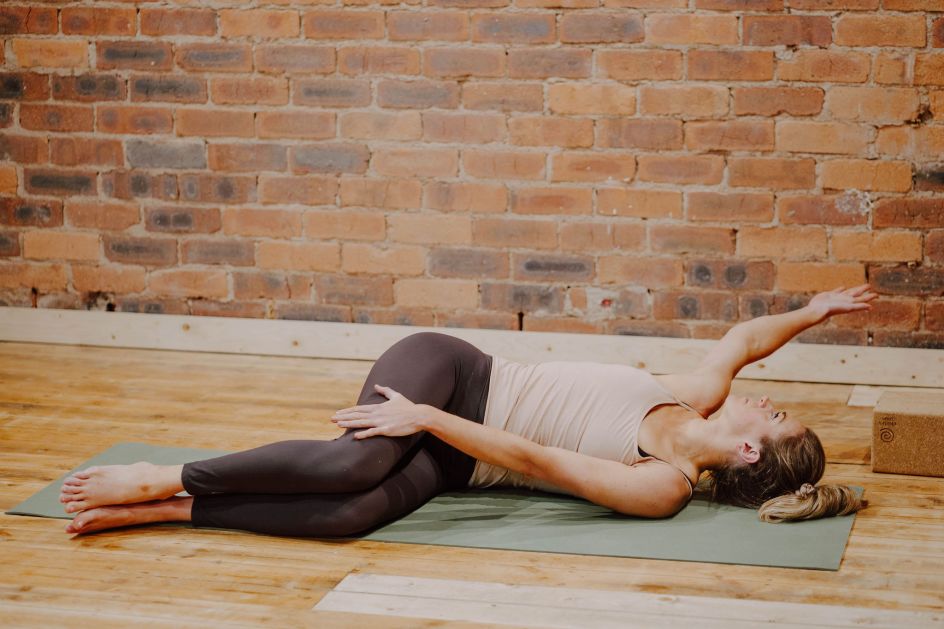
I am in a partnership with my physical body. I look after her, she looks after me, we do a lot of movement stuff together, and I don't suffer any pain at all. Worrying about pain doesn't take up a single moment of my day. For people in pain, their pain will occupy their minds much of the time, even if they try to push it away.
As a side note, my work has absolutely nothing to do with desk setups, ergonomic chairs or telling people 'how to sit'. I teach people how to move and not how to sit still 'in the best way'. When you prioritise moving well/frequently away from your desk, you'll be able to sit still for long periods of time with no problem.
What common problems do you see from people with desk jobs?
What don't I see? I could probably make a list quite quickly off the top of my head of at least a hundred symptoms caused by years and years of being sat down, but I will probably summarise the most common one as best as I can!
Being seated puts your body in hip flexion (a bend at the hip). If you don't do enough hip extension to remedy the hip flexion (when you walk, the leg behind you is in hip extension), your hip flexors will crank themselves up tight and stay locked in hip flexion. They have become dysfunctional; they can no longer function in the way they are supposed to (they have lost the capacity to extend), even when they are standing up and walking.
Over time, this lack of hip extension impacts the position of the knee (therefore can cause knee pain), and the knee changing also then impacts the foot (therefore can cause foot pain). Tight hips attach to the bottom of the ribcage (and the diaphragm – tight hips strongly impact your capacity to breathe well), so your ribcage position also then changes. When the ribcage position alters, the shoulders can't sit comfortably (causing shoulder pain), the arms round forwards (causing arm symptoms like carpal tunnel and tennis elbow) and the head juts forward (causing things like lockjaw, headaches, tinnitus, vertigo). Layer on top of that, the fact that most people sit cross-legged in a chair causes pelvic imbalance and rotation/imbalance through the vertebrae of the spine, causing things like herniated discs and sciatica.
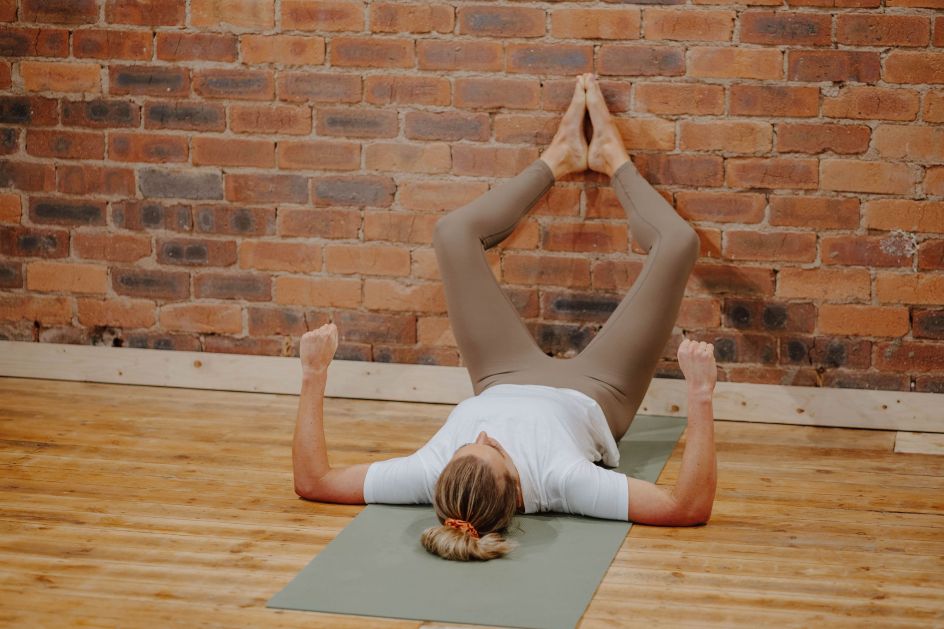
I see the body as a whole. One part of the body that is seemingly very far away from another will directly impact each other when you understand the chains of muscles and how they communicate with each other.
I saw you don't sit in a chair until 7pm?! Is that true?
I think you're referring to an article I did in lockdown, and yes, at the time, I wasn't sitting in a chair until the evening. I sat down, but on the floor, in order to keep myself fidgeting about as much as possible.
Since then, I've moved house, and my business has changed a lot. When I wrote that article, my bread and butter was 1-2-1 work, and the 1-2-1 facilitated what I spoke about in 2020.
Nowadays, I don't work with anyone 1-2-1 and offer group courses and classes instead. This means I spend a lot less time at my computer, and so I can fit a lot more movement into my day in general. I don't really worry about my seated time because 90% of my days are fairly active now.
What has changed since 2020 is that I don't sit on a sofa in the evenings anymore! I watch TV/relax but always lay on the floor and do posture moves at the same time.
The more I move, the more I struggle to sit still. I am a 35-year-old going on five – I cannot sit still anymore! I used to be an excellent coach potato, but my body loves moving too much now.
Are standing desks good for posture?
I don't really think they are much better than a normal desk setup, to be honest. Doing anything for hours and hours and hours at a time (when most of your body is quite still) isn't what we are designed to do as humans – sitting or standing isn't great for eight hours of the day.
However, standing desks at least offset sitting time. So, for someone who commutes to work in a car/train and then spends the evening on the sofa, being standing creates more variety of movement for them. I also think being stood up creates more of an urge to fidget and move a bit more, which is good.
I see the body as a whole. One part of the body that is seemingly very far away from another will directly impact each other when you understand the chains of muscles and how they communicate with each other.
To further complicate the standing desk argument, you really need to be barefoot/in socks/barefoot shoes whilst at them. If you are wearing normal shoes (which are normally heeled to varying degrees), this is really not good for your posture. I wish more people understood how much their (even slightly) heeled footwear was messing up how the rest of them move and feel.
Someone at a standing desk all day in heels is probably going to suffer more than being sat all day in heels.
What one thing can creatives do today to improve their posture?
I wish I could give a sexier answer to this, but my work isn't about quick fixes or hacks. It's about hard work and habit change. The one thing you can do today to improve your posture is try to move differently and more frequently. Find someone like me to guide you through this process and navigate the waters.
To give you a slightly sexier answer, next time you're standing still (maybe at a standing desk), take off your shoes and stand pigeon-toed. Relax the toes (no clawing), pin into your big joints, and try to keep the weight even side to side in your feet. Hold for five minutes. You might find you're cramping and shaking all over. This is because the change in foot position changes the hip position and gets the hips extending (stretching). It can change the whole body very quickly.
What is the often overlooked dysfunctional aspect of our bodies? (I presume it's our feet??)
Feet are certainly a part of the body that I wish people could see the impact of more clearly. Our feet are our foundations. When they are stuffed into heeled, tight, wobbly shoes (like trainers), they deform our feet and switch them off. When our feet switch off, the rest of us run into problems.
However, my new favourite dysfunctional body part is the hands. Phones/typing/writing create claw hands. This tension in the palms feeds into arms and shoulders and necks and spines that can't move either. Unlocking tight hands can create whole-body convulsions as the tension dissipates. Magic to witness!
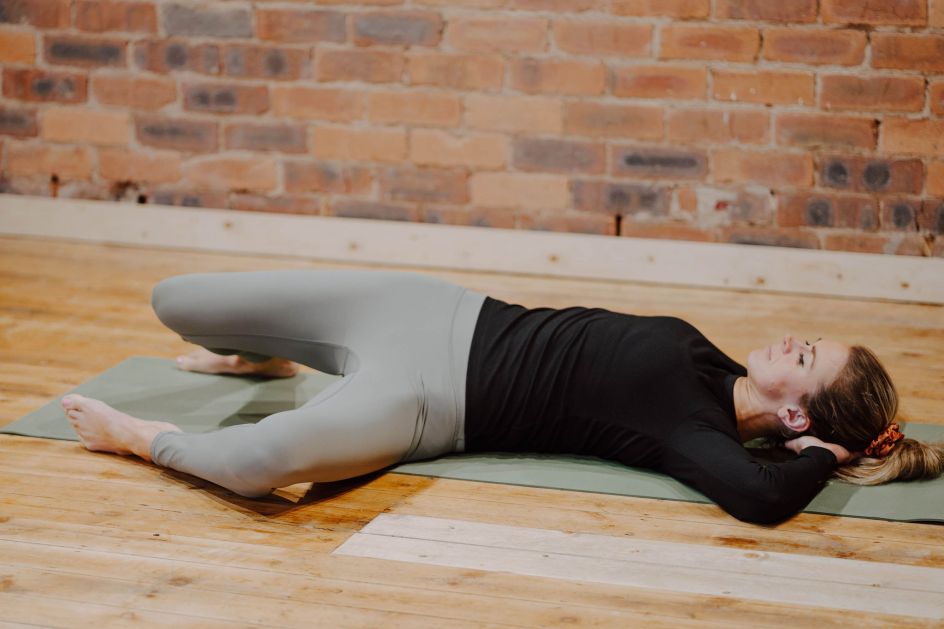
Which footwear would you recommend then? And do you have a routine to help our hands?
I recommend Wildsole Sandals (use the code ELLIE for 10% off) and also Vivo Barefoot (use the code POSTUREELLIEVIVO for 10% off). These are both brands I highly recommend. They help your feet move like human feet, and this will impact the rest of you in ways you cannot begin to imagine until you start "going barefoot". Take it steady, though – most people are fine going 'cold turkey', but, for some people, it takes a while to build up the strength before their body is ready for the transition. Think of it as a marathon, not a sprint!
For hands? This routine might be the best one! Just for brevity and simplicity – no equipment is needed.
You run an amazing course and various services. What is the feedback you get?
It's mainly along the lines of "Why don't more people know about this?" or "I wish I'd found out about this sooner and not wasted so many years suffering when I didn't need to". The good news is that it's never too late to start. Progress can always be made. I do feel sad for how much people have to struggle when they don't need to. I wish I could bottle up how great I feel when I move and spritz it on people so they could realise that moving shouldn't equate to tension, pain or worry. It should make you feel free, incredible and joyous.
How did you get into this? It wasn't related to your degree, was it?
I did Politics! When I was young, I had grand dreams of changing the world and becoming a politician. I very quickly, as an adult, became pretty 'anti-establishment', so I dropped this idea when I realised I couldn't stand all the lies, corruption and hypocrisy of our government.
I fell into various sales jobs after university, and I enjoyed them to a certain extent. I made decent money, had some great colleagues, and learned a lot.
I then just became deeply, deeply unhappy. I lived in London, and I just couldn't find happiness. I was so unhealthy, partying all the time, numbing my problems and pushing them away. It all burst out of me one day in 2016, and I had some form of "episode". I don't really know, but my body told me I had enough, and I finally listened to it.
I quit my job, left London, moved back home with my mum and spent another two years in a fairly dark place trying to figure it all out. Thankfully, something around this time made me discover and really get into yoga. I finally found my 'thing' that took the edge off in a healthy way.
Yoga changed my life, and my journey of self-discovery and physical strength began. I felt so good about it, and my mental barriers and protective mechanisms started to melt away. I thought the yoga market around me was oversaturated (I lived in a small city), so I trained to become a Sports Massage Therapist. Annoyingly, I couldn't get on board with it after I qualified. Massage treats symptoms, but it doesn't change why the symptoms are there in the first place. I wanted to stop the tension from forming, not just treat the tension.
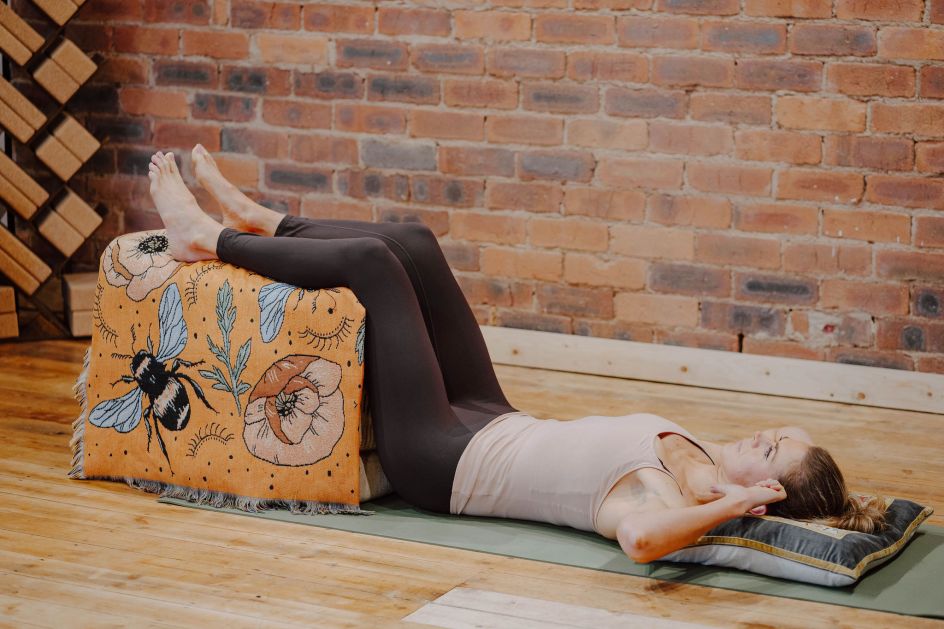
When I found posture therapy/The Egoscue Method (the name of what I am trained in), I finally found the thing that made sense to me. Hardly anyone was really doing it in the UK, and so I thought, there's a gap in the market here, but this is absolutely terrifying (I had no one else to lean on/turn to/ask questions of), but I just knew I had to try and make it work.
It worked – the rest is history!
Finally, if people are interested in adopting posture therapy, what's their first step?
The best first step would be to check out my Free 7 Day Posture Challenge and, at the same time, buy a copy of Pain Free: A Revolutionary Method for Stopping Chronic Pain by Pete Egoscue. This is what my work is mainly based upon and really helps set the theory out in an easy-to-understand way. For the right person, it will get you really excited as to how much potential you have within you to change, and I would love to be the person to help you achieve that change!
Further Information
Fancy understanding more about your posture? Let Posture Ellie guide you through a week-long introduction to posture via video. Sign up below and you'll get one email a day (for a week) containing a new posture exercise to try.




 by Tüpokompanii](https://www.creativeboom.com/upload/articles/58/58684538770fb5b428dc1882f7a732f153500153_732.jpg)


 using <a href="https://www.ohnotype.co/fonts/obviously" target="_blank">Obviously</a> by Oh No Type Co., Art Director, Brand & Creative—Spotify](https://www.creativeboom.com/upload/articles/6e/6ed31eddc26fa563f213fc76d6993dab9231ffe4_732.jpg)








